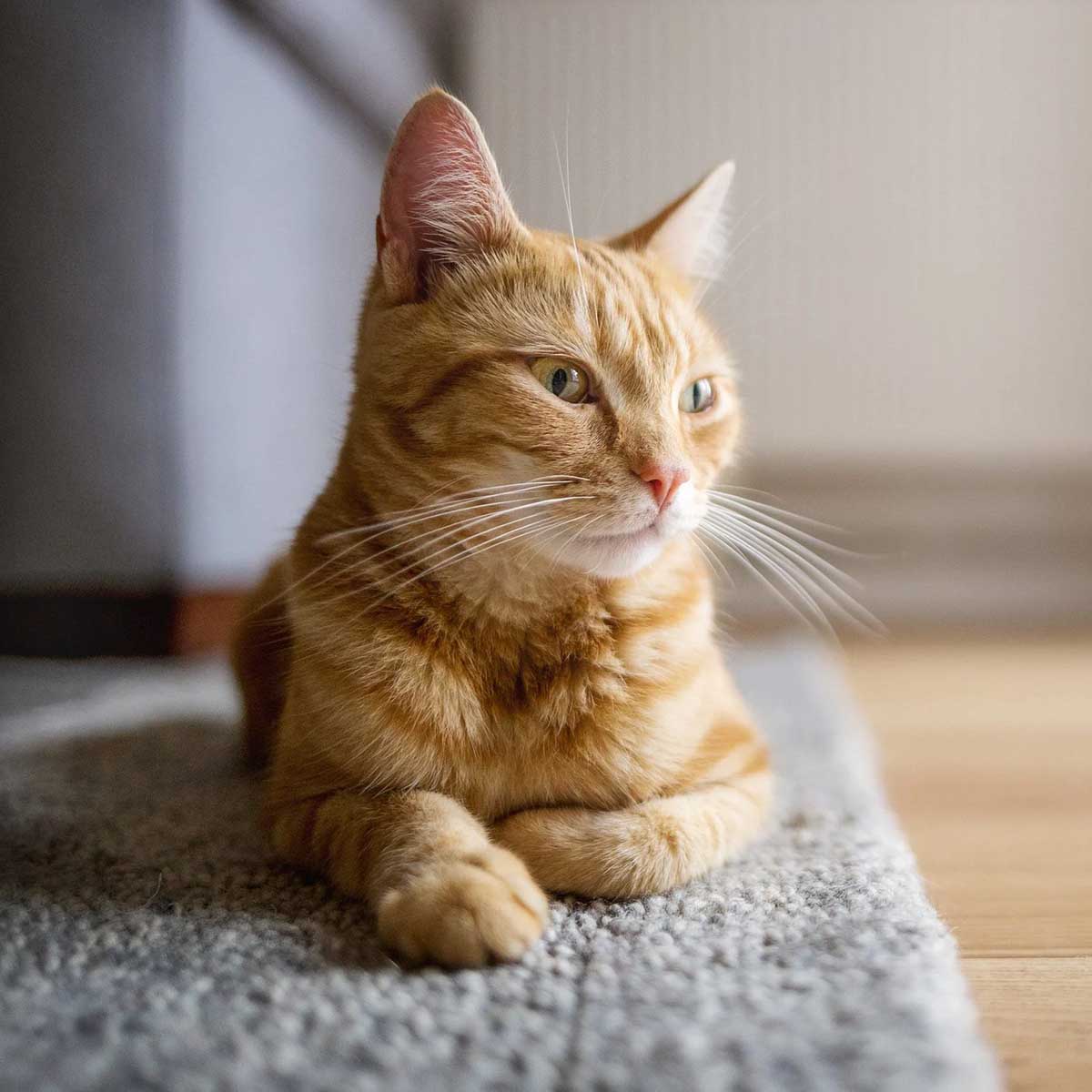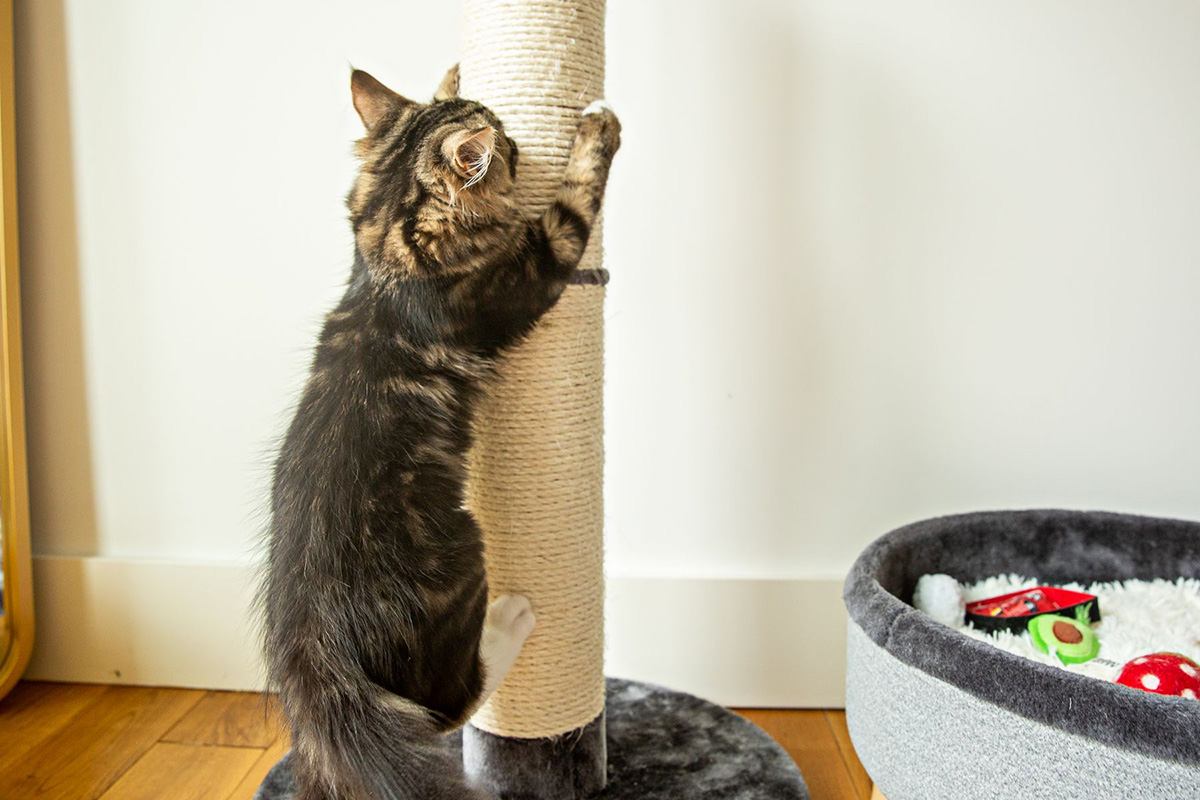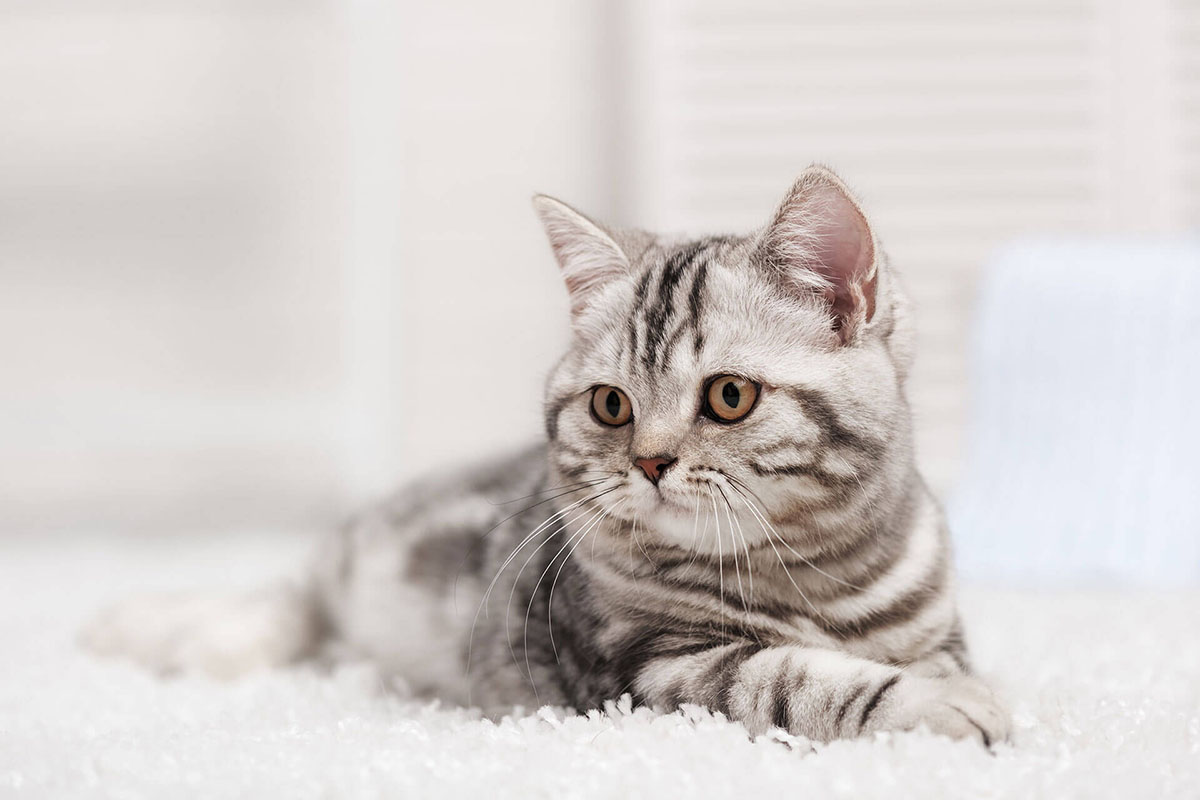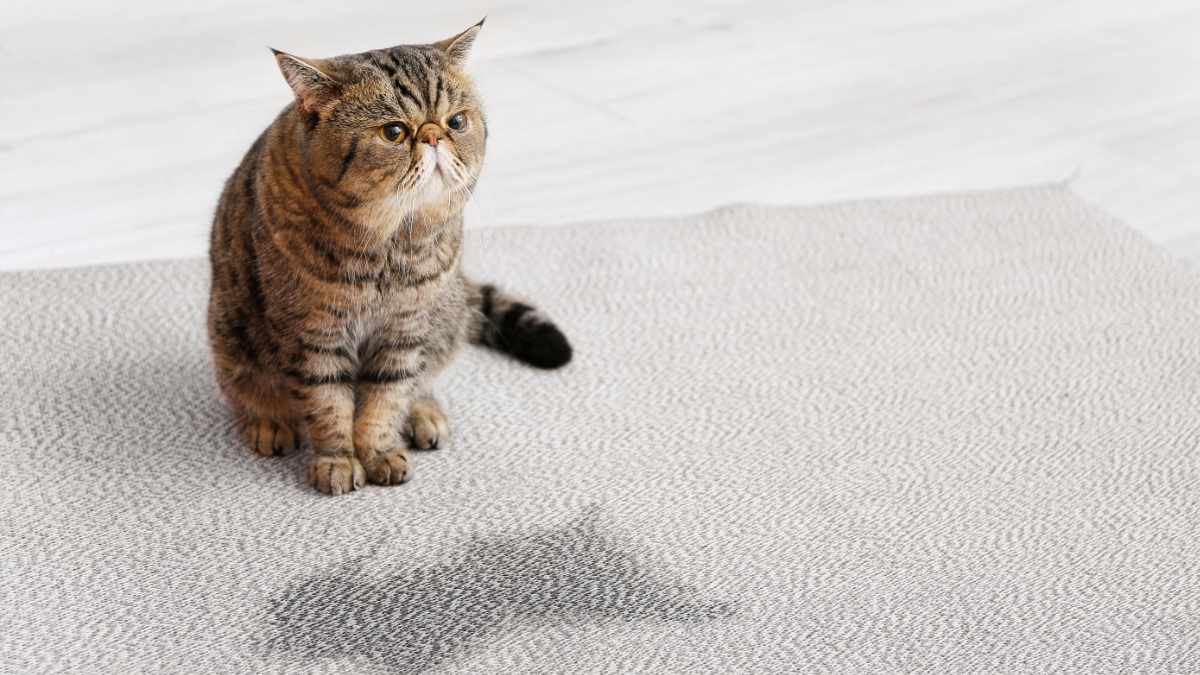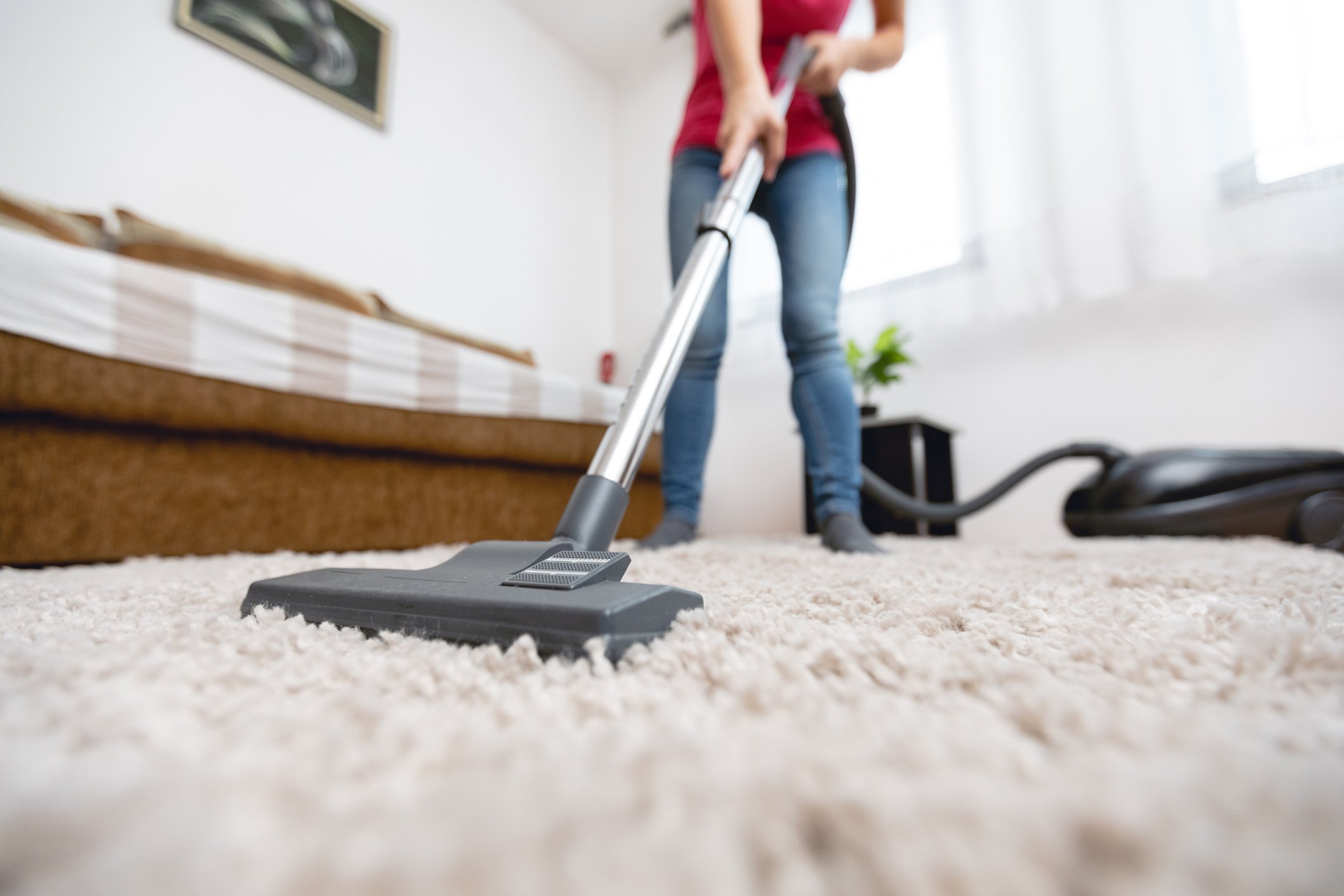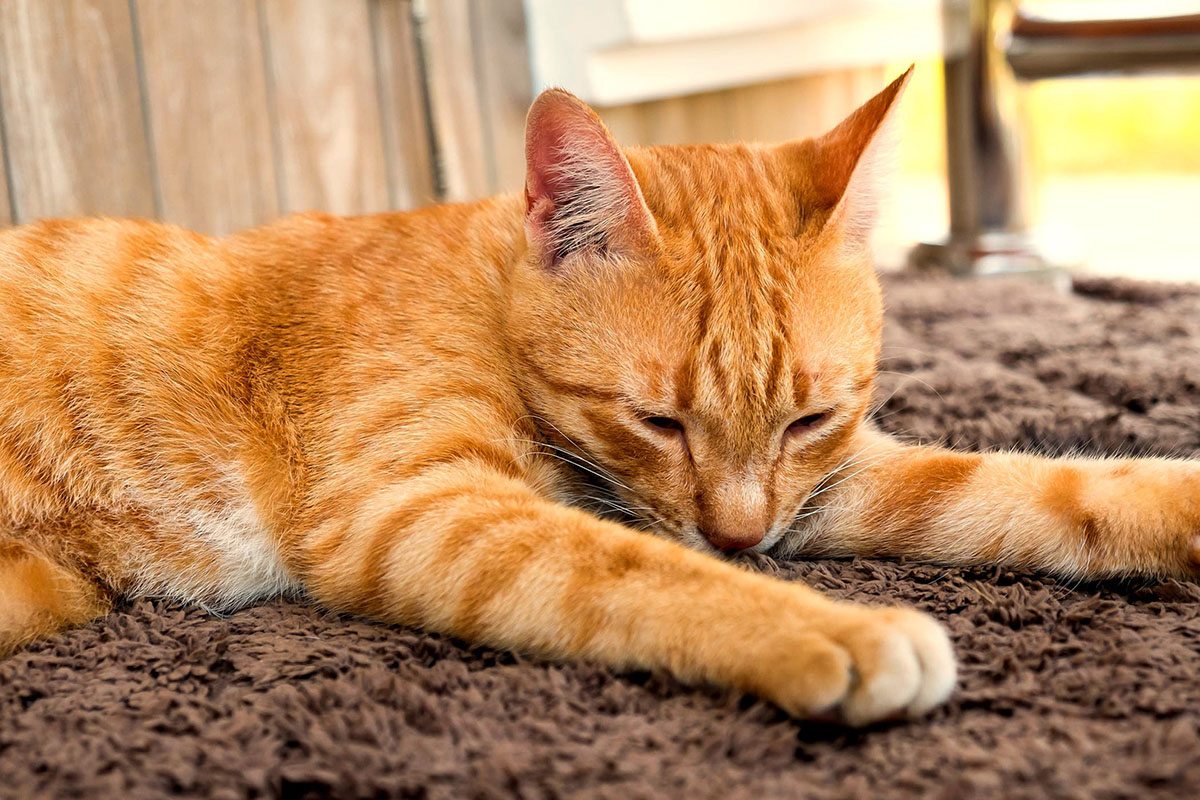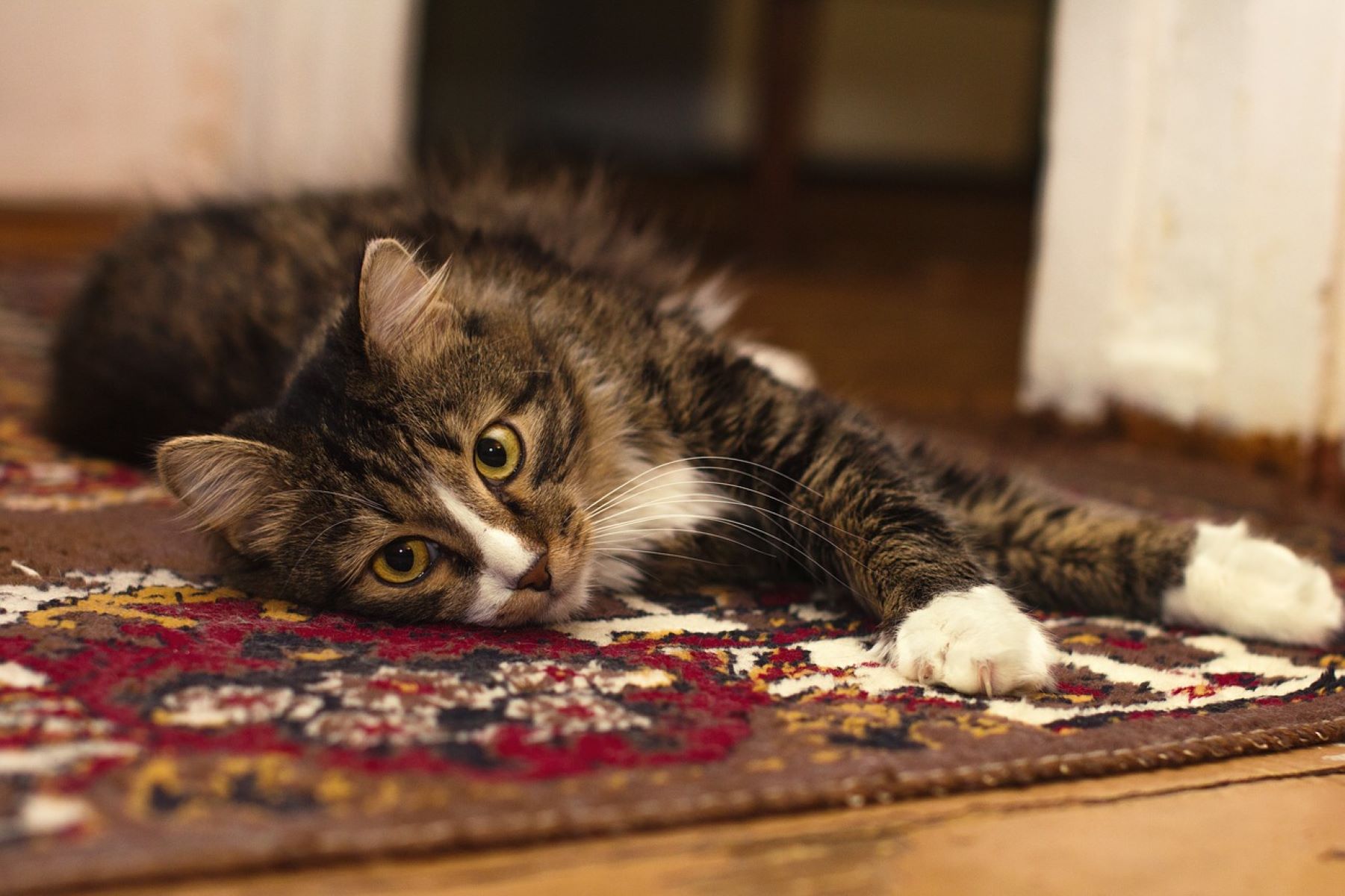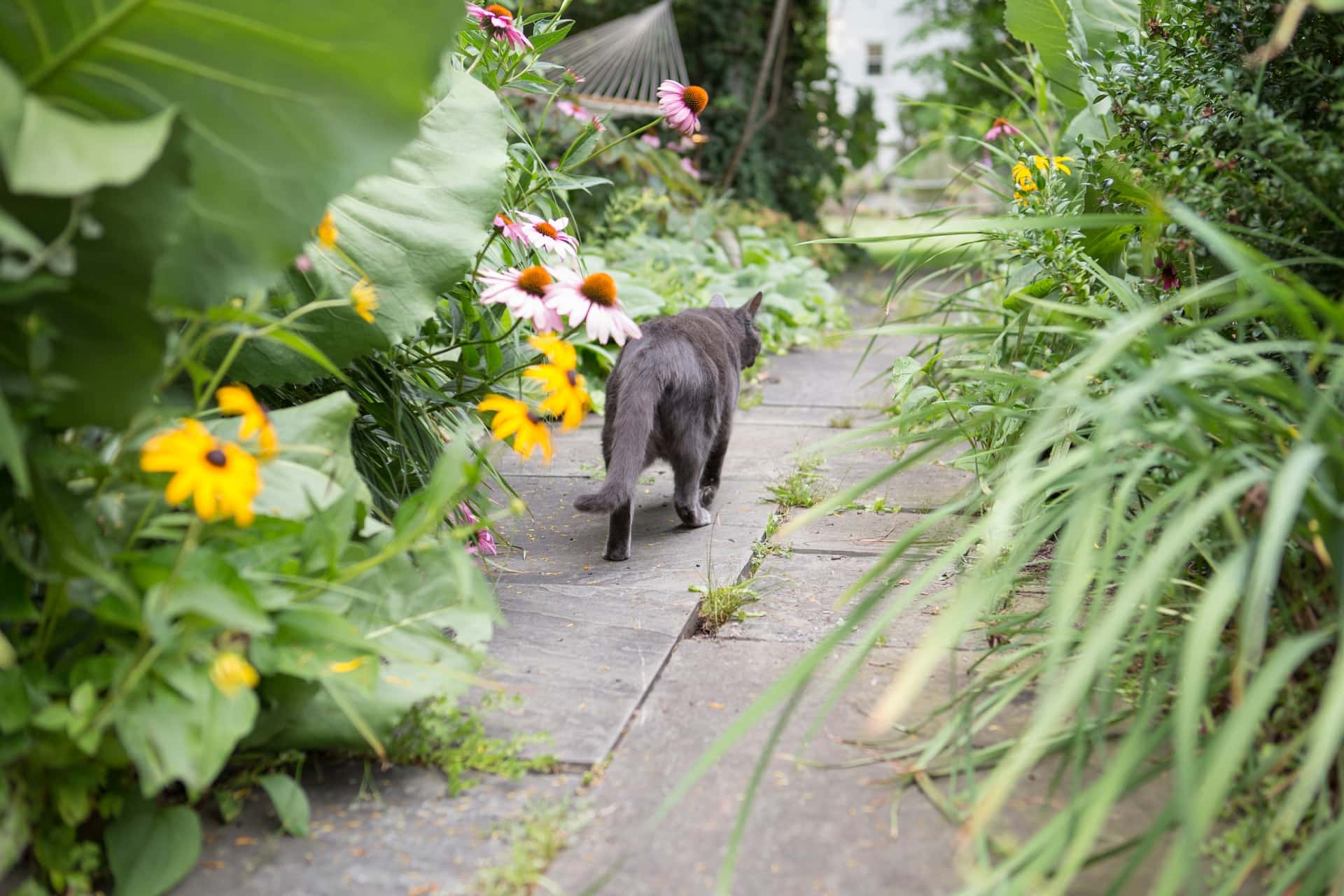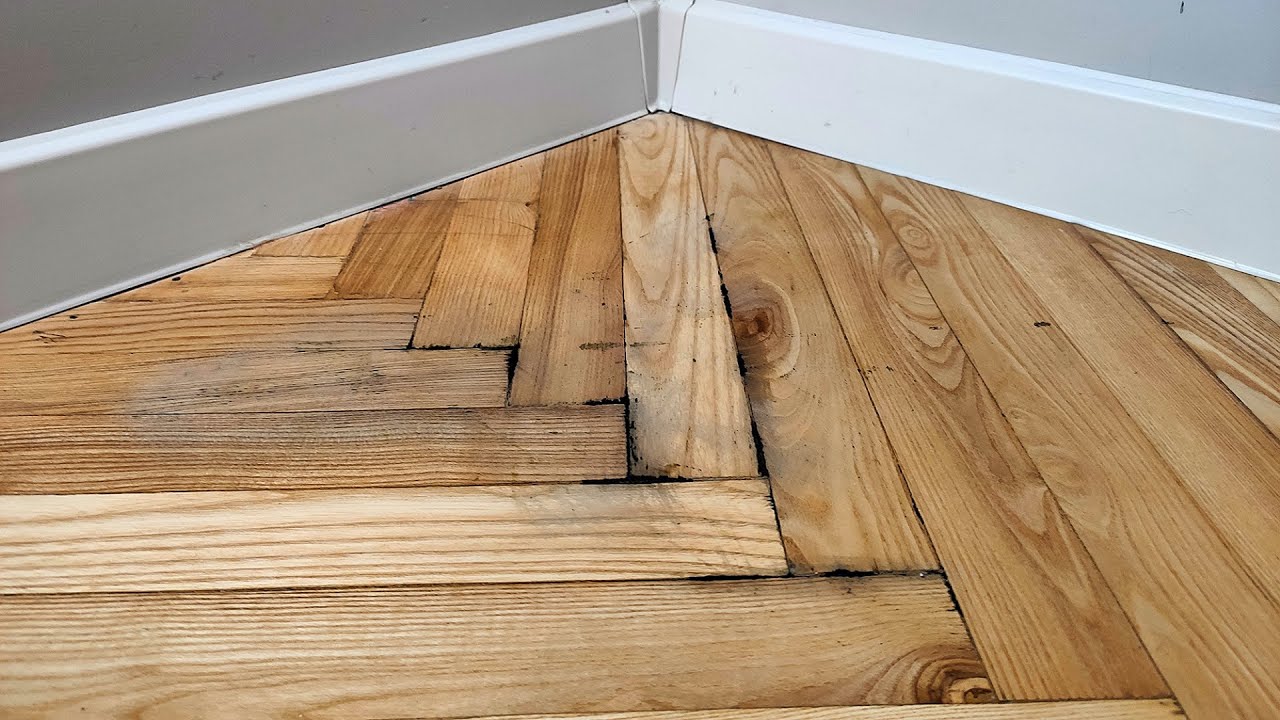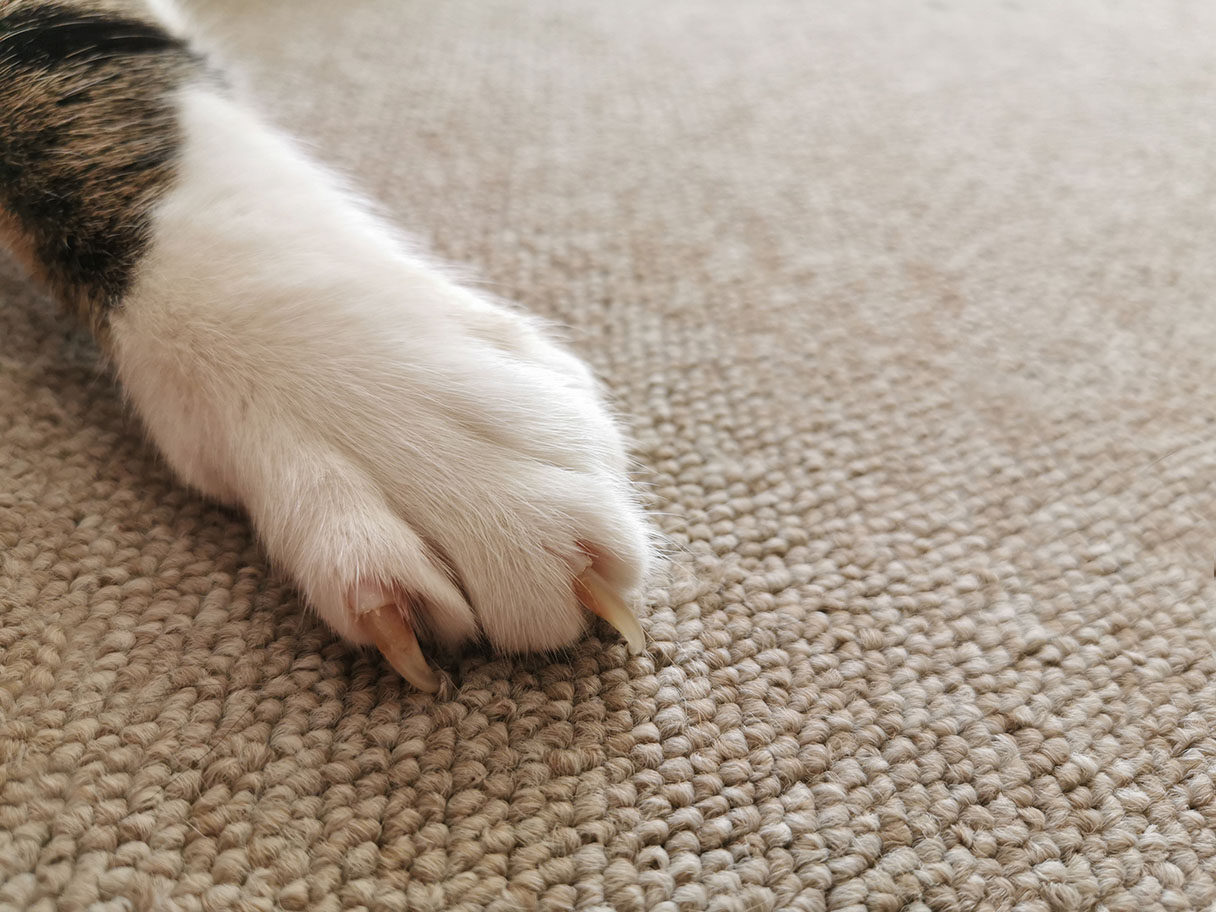

Articles
How To Repair A Carpet Damaged By Cats
Modified: January 9, 2024
Learn effective techniques for repairing carpets damaged by cats in this comprehensive article. Find expert tips and guidance to restore your carpet's pristine condition today!
(Many of the links in this article redirect to a specific reviewed product. Your purchase of these products through affiliate links helps to generate commission for Storables.com, at no extra cost. Learn more)
Introduction
Having a cat as a beloved pet can bring immense joy and companionship to our lives. However, sometimes our furry friends can unintentionally cause damage to our homes, including our carpets. Whether it’s their natural instinct to scratch or an occasional accident, a carpet damaged by cats can be a frustrating sight for any pet owner. But fear not! With the right knowledge and tools, you can repair the damage and restore your carpet to its former glory.
In this article, we’ll explore the common types of damage that cats can cause to carpets and provide step-by-step instructions on how to repair and restore them. We’ll also discuss preventive measures to help avoid future incidents. So, if you’re ready to say goodbye to those unsightly claw marks and unpleasant odors, let’s get started on repairing your carpet damaged by cats!
Key Takeaways:
- Repairing a carpet damaged by cats requires understanding their behavior, assessing the damage, and using the right tools and materials. With patience and care, claw marks and urine stains can be effectively restored.
- Preventing further damage by cats involves providing scratching alternatives, using deterrents, and maintaining a cat-friendly environment. By redirecting their behavior, you can enjoy a harmonious home with your furry friends.
Read more: How To Repair Damaged Siding On House
Understanding the Damage Caused by Cats
Cats have natural instincts that can sometimes lead to damage on our carpets. Understanding the specific types of damage they can cause is crucial in determining the best approach for repair. Let’s take a closer look at two common forms of damage caused by cats: clawing and scratching, and urine stains and odors.
Clawing and Scratching
Cats have sharp claws that need regular maintenance, and they instinctively use their claws to scratch on various surfaces. Unfortunately, this often includes our carpets. Clawing and scratching can result in unsightly marks and frayed fibers, leaving your carpet looking worn and damaged.
When cats scratch, they are not intentionally trying to ruin your carpet. Rather, they engage in this behavior to stretch their muscles, remove the outer layer of their claws, and establish territory by marking the area with scent glands located in their paws. Understanding this natural behavior can help you approach the repair process with empathy.
Urine Stains and Odors
Occasionally, cats may have accidents on our carpets, resulting in urine stains and odors. This can be particularly challenging to deal with as the urine can penetrate deep into the carpet fibers, leaving behind both visible stains and persistent, unpleasant odors.
There are several reasons why cats may urinate outside of their litter boxes, such as health issues, stress, or territorial marking. It’s essential to address the underlying cause to prevent future accidents and keep your carpet in good condition.
Understanding the specific types of damage caused by cats is the first step towards effective repair and restoration. In the following sections, we’ll discuss how to assess the damage and gather the necessary tools and materials for the repair process. So, let’s move on to the next step!
Assessing the Damage
Before diving into the repair process, it’s essential to assess the extent of the damage caused by your cat. By examining the claw marks and identifying urine stains, you can determine the appropriate techniques and materials needed for a successful restoration. Let’s take a closer look at how to assess the damage correctly.
Read more: How To Re-Carpet A Cat Tree
Examining Claw Marks
Start by carefully inspecting the area where your cat has been scratching. Look for visible claw marks and frayed carpet fibers. Note the size and depth of the damage. If the fibers are only slightly frayed, repairs may be relatively straightforward. However, if the damage is extensive or reaches the carpet padding, you may need to consider more extensive repairs or even replacing the affected area.
Take note of the color and texture of the carpet fibers near the claw marks. This information will be useful when it comes to selecting the appropriate carpet adhesive and matching the patch with the surrounding carpet.
Identifying Urine Stains
When it comes to urine stains, it’s important to identify both visible and hidden marks. Start by visually inspecting the carpet for any noticeable discoloration or staining. Keep in mind that fresh stains may still be damp, while older stains can appear darker and have a distinct odor.
However, not all urine stains may be immediately visible to the naked eye. Cats have a strong sense of smell and may continue to be drawn to previous marking spots even after cleaning. To identify hidden urine stains, you can rely on ultraviolet (UV) lights or blacklights. These lights can help pinpoint the exact locations of urine deposits, allowing for targeted cleaning and odor removal.
By accurately assessing the claw marks and urine stains, you’ll be better equipped to choose the appropriate repair methods and materials. In the next section, we’ll discuss the tools and materials you’ll need for repairing your carpet damaged by cats. So, let’s gather everything we need for a successful restoration!
Gathering the Necessary Tools and Materials
Now that you’ve assessed the damage caused by your cat, it’s time to gather the necessary tools and materials for the repair process. Having the right supplies on hand will ensure a smooth and effective restoration. Here are the essential items you’ll need:
Carpet Repair Kit
A carpet repair kit is an essential tool for fixing claw marks and minor carpet damage. These kits typically include a carpet knife or scissors for trimming loose fibers, adhesive for securing patching material, and a patching material that matches the color and texture of your carpet. Make sure to choose a kit that is suitable for your specific carpet type and the extent of the damage.
Read more: How To Remove Hardwood Floor Without Damage
Stain Remover
To effectively remove urine stains, you’ll need a high-quality stain remover designed for carpet use. Look for a product that is specifically formulated to break down pet urine stains and is safe for use on your type of carpet. Follow the manufacturer’s instructions carefully for best results.
Odor Neutralizer
In addition to removing urine stains, it’s important to address any lingering odors. An odor neutralizer designed for pet odors can help eliminate the unpleasant scent from your carpet. Look for products that are enzymatic or contain natural odor-fighting ingredients. These neutralizers work by breaking down the organic compounds in the urine, effectively eliminating the odor rather than masking it.
Aside from these specific items, you may also need a few additional supplies such as clean cloths, a vacuum cleaner, a lint roller, and protective gloves. Having these tools readily available will make the repair process more efficient and ensure a successful restoration.
Now that you have gathered all the necessary tools and materials, you’re ready to move on to the next steps of the repair process. In the following sections, we’ll discuss how to remove cat hair and debris from the carpet, repair claw marks, treat urine stains and odors, and restore your carpet to its former glory. So, let’s get started on repairing your carpet damaged by cats!
Removing Cat Hair and Debris
Before you begin the actual repair process, it’s important to remove any cat hair and debris from the damaged area. This will ensure a clean surface for the repair and enhance the overall effectiveness of the restoration. Here are two effective methods for removing cat hair and debris from your carpet:
Vacuuming
The first step in removing cat hair and debris is to thoroughly vacuum the affected area. Use a vacuum cleaner with a brush attachment to gently loosen and remove the hair and debris from the carpet fibers. Pay extra attention to the damaged areas and make multiple passes to ensure that you capture as much loose material as possible.
Make sure to vacuum in different directions to dislodge and lift any embedded cat hair or debris. Additionally, consider using the crevice attachment to reach into corners and along baseboards, where hair and debris often accumulate.
Read more: How To Stop Cat From Pooping On A Carpet
Using a Lint Roller
In addition to vacuuming, using a lint roller can be an effective tool for picking up any remaining cat hair or small particles that may have been missed. Roll the lint roller over the carpet surface, applying gentle pressure to ensure that it adheres to the hair and debris. Move in both horizontal and vertical directions to cover the entire area thoroughly.
A lint roller is particularly useful for capturing stubborn cat hair that may be tangled in carpet fibers. It’s a convenient and quick method to pick up any remnants that may make the repair process more challenging if left behind.
By thoroughly vacuuming and using a lint roller, you can ensure that the damaged area is clean and ready for repair. Removing cat hair and debris will also improve the overall appearance of the carpet and help achieve a more seamless restoration. With this step complete, you’re now ready to move on to repairing the claw marks on your carpet. Let’s get started!
Repairing Claw Marks
Now that you’ve removed the cat hair and debris, it’s time to repair the claw marks left on your carpet. Repairing claw marks involves trimming loose fibers, applying carpet adhesive, and blending the patch with the surrounding carpet. By following these steps, you can effectively restore the damaged area. Here’s how to repair claw marks on your carpet:
Trimming Loose Fibers
Start by examining the damaged area and identifying any loose or frayed carpet fibers. Using a sharp pair of scissors or a carpet knife, carefully trim the loose fibers to create a clean and even edge around the claw marks. Be cautious not to cut too deeply into the carpet pile, as this may create a noticeable depression.
By trimming away the loose fibers, you create a flatter and smoother surface for the adhesive and patching material to adhere to. This step is crucial for achieving a seamless repair.
Applying Carpet Adhesive
Once you’ve trimmed the loose fibers, it’s time to apply carpet adhesive to secure the patching material. Follow the instructions provided with your carpet repair kit to determine the appropriate amount of adhesive to use. Use a small paintbrush or a putty knife to apply the adhesive evenly to the damaged area.
Be sure to apply adhesive beyond the edges of the claw marks to ensure a secure bond with the patching material. Take care not to apply too much adhesive, as it may seep through the carpet fibers and create a visible residue.
Read more: How To Fix A Carpet Pulled Up By A Cat
Blending the Patch with Surrounding Carpet
After applying the adhesive, carefully place the patching material over the damaged area, aligning it with the surrounding carpet fibers. Gently press down to ensure a firm bond. Use a clean cloth or your fingertips to blend the edges of the patch with the surrounding carpet, creating a seamless transition.
Take note of the color and texture of the surrounding carpet fibers, and try to mimic them as closely as possible when selecting the patching material. This will help ensure that the repaired area blends in naturally with the rest of the carpet.
With the claw marks repaired, you have successfully tackled one aspect of restoring your carpet damaged by cats. In the next section, we’ll discuss how to treat urine stains and odors, which are another common issue. So, let’s move on to restoring your carpet to its fresh and clean state!
Treating Urine Stains and Odors
In addition to repairing claw marks, you may also need to address urine stains and odors caused by your cat. Treating urine stains and odors requires a systematic approach to ensure effective removal and neutralization. Here are the steps to follow when treating urine stains and odors:
Blotting the Stain
As soon as you discover a urine stain, it’s crucial to act quickly. Use a clean cloth or paper towels to blot the area gently. Avoid rubbing, as this can spread the stain further into the carpet fibers. Blotting helps to absorb as much of the urine as possible before further treatment.
Applying Stain Remover
Once you’ve blotted the stain, it’s time to apply a stain remover specifically designed for pet urine. Follow the instructions on the stain remover product for the best results. It’s essential to choose a stain remover that is safe for your carpet type and effectively breaks down the urine compounds.
Apply the stain remover to the affected area, ensuring that it covers the entire stained portion. Allow the stain remover to sit according to the manufacturer’s instructions, giving it time to penetrate the carpet fibers and break down the urine stains.
Read more: How To Clean Cat Puke Out Of A Carpet
Neutralizing Odors
In addition to treating the visible urine stains, you’ll want to address any lingering odors. Odor neutralizers designed specifically for pet odors can help eliminate the unpleasant smells. Look for enzymatic or natural odor neutralizers that work to break down the organic compounds in the urine, rather than just masking the odor.
Follow the instructions provided with the odor neutralizer product to effectively neutralize the odors. Some products may require spraying or applying the neutralizer directly to the affected area. Be sure to thoroughly cover the entire stained portion and allow the product to work its magic.
By blotting the stain, applying a suitable stain remover, and neutralizing the odors, you can effectively treat urine stains and eliminate the unpleasant smells from your carpet. The next step is to clean and restore the carpet to its original condition. So, let’s move on to the cleaning process and give your carpet a fresh start!
Cleaning and Restoring the Carpet
Now that you have repaired the claw marks and treated the urine stains and odors, it’s time to give your carpet a thorough cleaning and restore its appearance. Cleaning and restoring your carpet will not only remove any remaining dirt or residue but also revive its color and texture. Here are the steps to follow for cleaning and restoring your carpet:
Deep Cleaning
One of the most effective methods for deep cleaning your carpet is by using a carpet cleaning machine or hiring professional carpet cleaners. These machines are designed to deep clean the fibers, extracting dirt, dust, and any remaining residue from the repair process. Follow the instructions provided with the carpet cleaning machine or consult with the professional cleaners on the best approach for your specific carpet type.
Ensure that you cover the entire carpet, paying particular attention to the repaired areas. Move the cleaning machine slowly across the carpet in overlapping strokes to ensure thorough cleaning. Be patient and allow enough time for the carpet to dry completely before moving furniture back or allowing foot traffic.
Refreshing the Carpet
After deep cleaning, you can further refresh your carpet by using a carpet freshener or deodorizer. These products help to eliminate any remaining odors and leave your carpet smelling fresh and clean. Choose a product specifically formulated for carpet use and follow the instructions provided.
Apply the carpet freshener evenly across the entire carpet, using a sweeping motion. You can use a specialized spray or sprinkle the product and then lightly brush it into the fibers. Allow the freshener to sit for the recommended amount of time, usually a few minutes, before vacuuming up the excess.
By deep cleaning and refreshing your carpet, you can effectively restore its appearance and remove any lingering dirt or odors. Your carpet will look and feel revitalized, bringing a sense of cleanliness and comfort to your space.
With the cleaning and restoration process complete, your carpet should now be back in excellent condition. However, it’s important to take preventive measures to avoid future damage caused by cats. Let’s explore some of these preventive measures in the next section!
Read more: How To Remove Cat Poop From Carpet
Preventing Further Damage by Cats
Now that you have successfully repaired and restored your carpet, it’s important to take preventative measures to avoid future damage caused by your cats. By providing scratching alternatives and using deterrents, you can redirect your cats’ behavior and protect your carpet. Here are two effective methods for preventing further damage:
Providing Scratching Alternatives
Cats have a natural instinct to scratch, so it’s important to provide them with suitable alternatives to redirect their behavior away from your carpet. Invest in scratching posts or cat trees that are sturdy and covered with cat-friendly materials such as sisal rope or corrugated cardboard.
Place the scratching posts or cat trees in strategic locations throughout your home, especially in areas where your cats typically spend time or where they have previously scratched on your carpet. Encourage your cats to use the alternatives by rewarding them with treats or praise when they engage in appropriate scratching behavior.
Regularly maintain and trim your cats’ claws to help prevent excessive damage to your carpet. By providing scratching alternatives, you can satisfy your cats’ natural scratching instincts and minimize the likelihood of them targeting your carpet.
Using Deterrents
Another effective way to prevent cats from damaging your carpet is by using deterrents that discourage their behavior. There are several types of deterrents available, including sprays, tapes, and motion-activated devices.
Citrus-scented sprays or sprays formulated specifically to deter cats can be applied to the areas where your cats have shown a tendency to scratch. The scent may repel them and discourage further scratching. Additionally, double-sided adhesive tapes can be placed on targeted areas, making them unpleasant to scratch.
Motion-activated devices emit a harmless spray of air or emit a sound when your cat approaches or starts scratching the protected area. These devices work as a deterrent and help train your cats to avoid scratching the carpet.
By using scratching alternatives and deterrents, you can discourage your cats from damaging your carpet and protect your investment. Consistency and positive reinforcement are key in redirecting their behavior and ensuring long-term success.
With these preventative measures in place, you can enjoy a harmonious living space with your cats without worrying about further damage to your carpet. Congratulations on successfully repairing your carpet and implementing preventive solutions!
Remember, patience and understanding are key when dealing with cat behavior. By providing them with alternative outlets and using deterrents, you can create a cat-friendly environment while keeping your carpet safe.
If you found this article helpful, please share it with other cat owners who may benefit from the information. Wishing you and your furry friends a happy and scratch-free home!
Conclusion
Repairing a carpet damaged by cats may initially seem like a daunting task, but with the right knowledge and tools, it is entirely possible to restore your carpet’s appearance and functionality. By understanding the damage caused by cats, assessing the extent of the damage, and gathering the necessary tools and materials, you can effectively repair claw marks and treat urine stains and odors.
Throughout the process, it’s important to approach the repairs with care and patience. Trimming loose fibers, applying carpet adhesive, and blending the patch with the surrounding carpet will help repair claw marks seamlessly. Blotting stains, applying stain remover, and neutralizing odors will effectively treat urine stains and eliminate unpleasant smells.
After the repairs are complete, deep cleaning the carpet and refreshing it with a carpet freshener will restore its appearance and revitalize its texture. Taking preventive measures, such as providing scratching alternatives and using deterrents, will help prevent further damage by redirecting your cat’s behavior.
Remember, maintaining a harmonious environment with your furry friends requires understanding and patience. By implementing these steps and preventive measures, you can enjoy a beautiful and cat-friendly home without worrying about the condition of your carpet.
We hope this article has provided you with valuable insights and actionable steps to repair and prevent further damage to your carpet caused by cats. With proper care and attention, you can ensure the longevity of your carpet while enjoying the companionship of your beloved pets.
Thank you for reading, and we wish you success in repairing and maintaining your carpet for years to come!
Frequently Asked Questions about How To Repair A Carpet Damaged By Cats
Was this page helpful?
At Storables.com, we guarantee accurate and reliable information. Our content, validated by Expert Board Contributors, is crafted following stringent Editorial Policies. We're committed to providing you with well-researched, expert-backed insights for all your informational needs.
